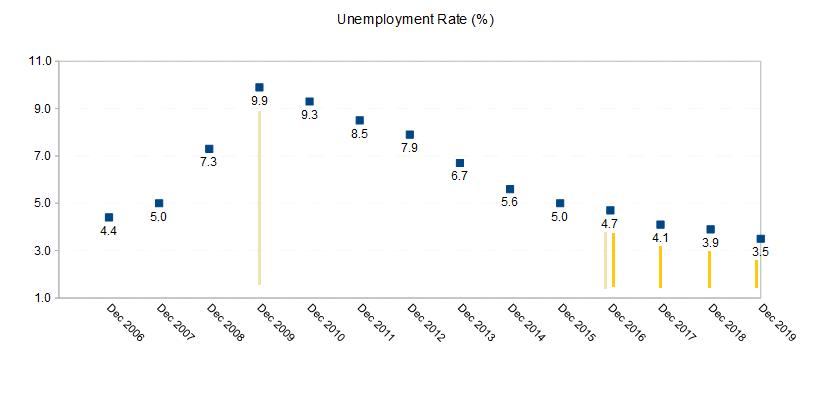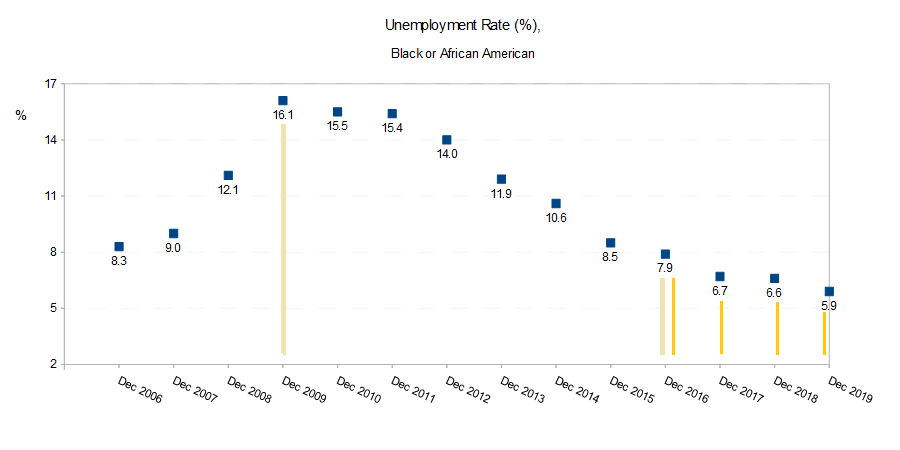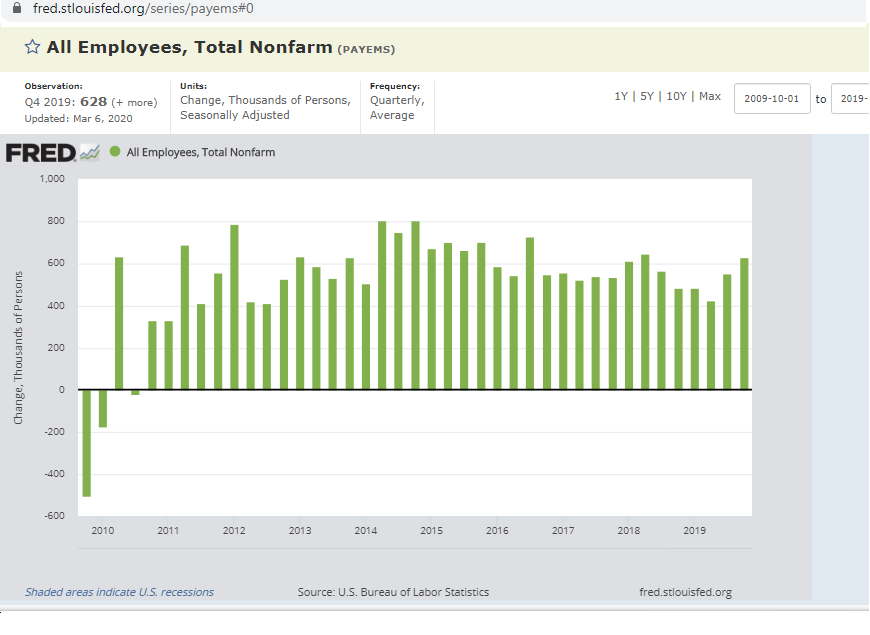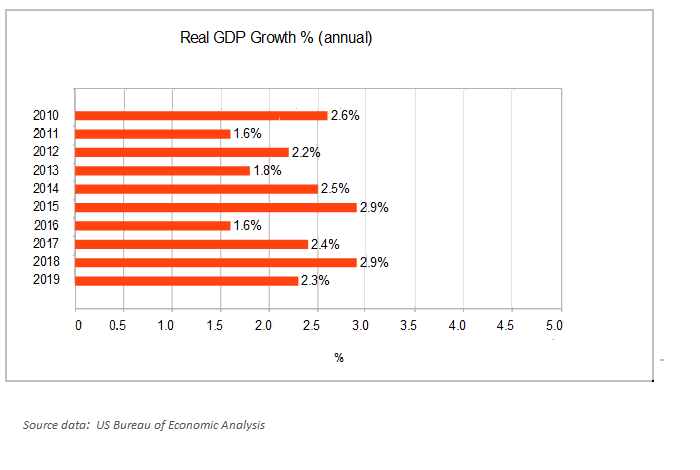

|
|
| |||
|
 |
|||
|
See below, a visual view of the economy's expansion when the Democrats held the White House.
Manufacturing Jobs - the 2010 Rebound MANUFACTURING EMPLOYMENT
took a sharp climb upward — in 2010.  | |||
|
|
[Note, you can produce the chart, from the Federal Reserve Bank
website here.
| ||
|
Unemployment plunged ... Here is the trajectory, over a decade, of UNEMPLOYMENT shrinking

Source data: Bureau of Labor Statistics, from monthly data seasonally adjusted Since the end of 2009, unemployment Since Trump took office the unemployment rate has

Source data: Bureau of Labor Statistics, from monthly data seasonally adjusted Most recent report for February 2020: 5.8% for the Black/ African-American unemployment rate

 The numbers for each of the last six years > >
The average gain in jobs in the prior 3 years (2,567,000 in 2014 and 2,882,000 in 2015 and 2,525,000 in 2016)
Note the rebound, then plateau, in motor vehicle sales and employment. VEHICLE SALES (Autos and Light Trucks), and AUTOMOBILE FACTORY EMPLOYMENT  Semi-annual Vehicle Sales
 Automobile Factory JOBS  GDP Also, see the much bally-hoo'ed GDP [gross domestic product] — it grew last year 2.3% in 2019, from 2018. 
The annual growth rate is shown above. Even the previous year's economic growth, in 2018, was the fastest
since, well, ... 2015.
 Looking at the employment and GDP growth data, how do you assign credit where credit is due?
Finally, looking at either the annual growth in GDP, or the recent quarterly numbers, It looks like a born-on 3rd base economy.
| |||